What is Multiple Alleles?
- In genetics, the term “multiple alleles” refers to the existence of more than two alternative forms of a gene at a specific locus on homologous chromosomes. Unlike the classical Mendelian concept of a gene having only two alleles—one dominant and one recessive—multiple alleles introduce additional complexity by presenting several possible variations of a single gene.
- Alleles are different forms of the same gene, and while an individual organism can possess only two alleles for any given gene, the population can exhibit multiple alleles. Each allele represents a distinct variation in the gene’s nucleotide sequence. The presence of multiple alleles at a single locus contributes to genetic diversity within a population.
- For instance, in humans, the ABO blood group system exemplifies multiple alleles. The gene controlling blood type has three alleles: A, B, and O. Each individual inherits two of these alleles, one from each parent, resulting in six possible genotypes (AA, AO, BB, BO, AB, OO). Despite the availability of multiple alleles in the population, each individual can only possess two alleles per gene locus.
- The concept of multiple alleles extends beyond human genetics. In rabbits, coat color is determined by multiple alleles of a single gene, and in tobacco plants, self-incompatibility is controlled by multiple alleles that prevent self-fertilization.
- To quantify the possible genotypes in a multiple allelic series, the formula n(n+1)/2 is used, where n represents the number of alleles. For example, a gene with three alleles can produce six different genotypes, while a gene with four alleles can generate ten distinct genotypes.
Definition of Multiple Alleles
Multiple alleles are different forms of the same gene that exist at a specific locus on homologous chromosomes, resulting in more than two possible variations of that gene within a population. While an individual organism can have only two alleles for a gene, multiple alleles contribute to genetic diversity within a population.
Multiple Alleles Characteristics
- Same Locus: Multiple alleles are variations of a gene located at the same locus on homologous chromosomes. Each chromosome carries only one allele of the gene at a given time.
- Control of the Same Trait: All alleles in a multiple allelic series influence the same trait or character. Despite the presence of various alleles, they all contribute to the determination of the same phenotypic characteristic.
- Dominance Hierarchy: Within a set of multiple alleles, the wild-type allele generally exhibits dominance over other alleles. The wild-type allele often represents the standard or most common phenotype.
- No Crossing Over: Unlike some genetic phenomena, there is no crossing over between alleles at the same locus. The alleles remain fixed in their specific positions on homologous chromosomes.
- Dominance of Wild Type: In a multiple allelic series, the wild-type allele is consistently dominant. Mutant alleles, if present, are typically recessive to the wild-type allele.
- Phenotypic Outcome of Mutant Crosses: When two mutant alleles are crossed, the resulting offspring will exhibit mutant phenotypes. The original wild-type form cannot be restored through such crosses.
- Examples of Multiple Alleles:
- Fur Color in Rabbits: The gene controlling coat color in rabbits has multiple alleles, including C (wild type), c^ch (chinchilla), c^h (Himalayan), and c (albino). These alleles result in a range of coat colors.
- ABO Blood Group in Humans: The ABO blood group system includes three alleles: A, B, and O. The A and B alleles encode specific antigens on red blood cells, while the O allele does not. The combination of these alleles determines blood type, with A and B being codominant.
- Wing Type in Drosophila: Variants in the gene for wing type in fruit flies illustrate multiple alleles affecting wing morphology.
- Eye Color in Drosophila: Multiple alleles determine the eye color in fruit flies, contributing to the diversity of eye colors observed.
Examples of Multiple Alleles

- Plants:
- Snapdragons: The flower color in snapdragons is determined by a system with four alleles: W (white), R (red), P (pink), and I (intermediate). The W allele is dominant and results in white flowers. The R and P alleles exhibit codominance, leading to flowers with both red and pink spots when present together. The I allele produces intermediate flower colors, and individuals with two I alleles show this intermediate phenotype.
- Bean Seed Coat Color: In beans, the color of the seed coat is controlled by three alleles: W (white), Y (yellow), and R (red). The W allele is dominant, resulting in white seed coats. The Y and R alleles are codominant, producing seed coats with yellow and red flecks. This system results in a diverse range of seed coat colors and patterns within the bean population.
- Animals:
- Rabbits: Coat color in rabbits is governed by four alleles: CC (full color), cch (chinchilla), chd (Himalayan), and cc (albino). The CC allele is dominant and produces a full-color coat. The cch and chd alleles are codominant, resulting in coats with a mix of chinchilla and Himalayan colors. The cc allele is recessive and results in an albino coat. This multiple allele system produces a wide variety of coat colors in rabbits.
- Fruit Flies (Drosophila melanogaster): Fruit flies exhibit multiple alleles affecting wing morphology. For instance, mutations at the same locus can result in vestigial wings (reduced size) or antlered wings (less developed). When flies with these mutations are crossed, their offspring show intermediate wing lengths, reflecting the complex interactions of these multiple alleles.
- Cats: Coat Color: Domestic cats exhibit multiple alleles for coat color, including black, orange, and white. These alleles interact to produce a wide range of coat patterns such as tortoiseshell and piebald. The coat color gene’s multiple alleles result in varied pigmentation and patterns, highlighting the genetic diversity within cat populations.
- Humans:
- ABO Blood Group: The ABO blood group system is a classic example of multiple alleles involving A, B, and O. The A and B alleles encode antigens on red blood cells, while the O allele does not. A person with one A allele and one B allele will have AB blood type due to the codominance of A and B. This system illustrates how multiple alleles can determine a specific trait.
- Eye Color: Eye color in humans is influenced by multiple genes, including OCA2 and HERC2. Variations in these genes affect melanin production, leading to a range of eye colors. The interaction of these alleles with each other and other genes contributes to the diversity of eye color seen in humans.
- Bacteria:
- Antibiotic Resistance: In bacteria, multiple alleles of genes can lead to various antibiotic resistance profiles. For example, different alleles can confer resistance to different antibiotics or affect the bacterium’s ability to adhere to and invade host tissues. This diversity is crucial for understanding bacterial pathogenicity and for developing effective treatment strategies.
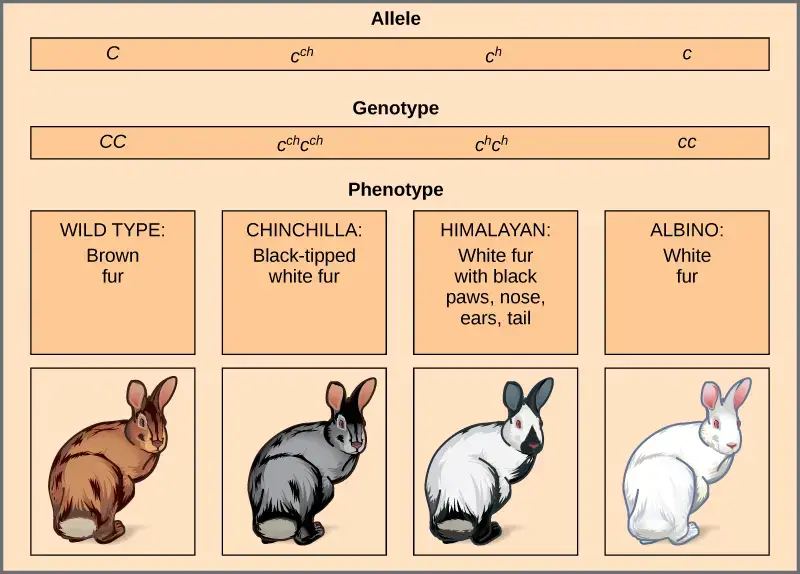
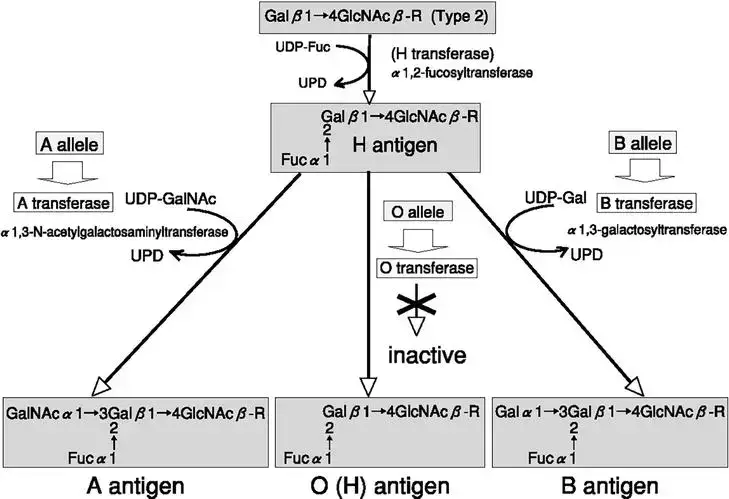
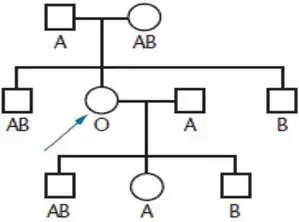
What is Pleiotropy?
Pleiotropy is a genetic phenomenon where a single gene affects multiple, seemingly unrelated traits or phenotypic characteristics. This occurs because the gene in question produces a protein or RNA molecule that plays a role in several cellular or metabolic pathways. Consequently, mutations in the gene can lead to a range of effects across different biological functions.
- Single Gene, Multiple Traits: Pleiotropy involves one gene influencing various attributes. This is due to the gene’s product, whether a protein or RNA, participating in multiple physiological processes. For instance, the gene may be integral to several metabolic pathways or cellular functions.
- Mechanism: The underlying mechanism of pleiotropy involves the gene’s product affecting multiple biological systems. The gene’s expression may impact different tissues or developmental stages, leading to a variety of phenotypic outcomes. Therefore, a single genetic alteration can result in diverse physiological or morphological changes.
- Example – Sickle Cell Anemia: A classical example of pleiotropy is the gene responsible for sickle cell anemia. This gene encodes for the production of hemoglobin, a protein essential for oxygen transport in red blood cells. A mutation in this gene results in the production of abnormal hemoglobin, leading to sickle-shaped red blood cells. This abnormal shape causes various health problems, such as anemia and pain crises, and increases the risk of infections and organ damage.
- Adaptive Advantage: Despite its severe health impacts, the sickle cell mutation is believed to have persisted in certain populations due to its protective effect against malaria. Individuals with one copy of the mutated gene exhibit partial resistance to malaria, which is advantageous in malaria-endemic regions. Thus, pleiotropic effects can sometimes confer evolutionary benefits.
- Broader Implications: Pleiotropy illustrates how a single genetic factor can have wide-ranging effects on an organism. It emphasizes the complexity of genetic interactions and the impact of genetic mutations on multiple traits. This concept is crucial for understanding genetic disorders and evolutionary biology, as it demonstrates how genes can influence diverse aspects of an organism’s phenotype.
What is Expressivity?
Expressivity refers to the degree or extent to which a specific genotype is expressed in an organism’s phenotype. This concept highlights the variability in the manifestation of a genetic trait among individuals with the same genetic makeup.
- Definition: Expressivity is the measure of how strongly a genotype influences a phenotype. It describes the range of phenotypic outcomes associated with a particular genetic condition. This variation can manifest in the strength, severity, or extent of the trait.
- Influencing Factors: Several factors can influence expressivity:
- Gene Expression Variations: Differences in how a gene is expressed can affect the phenotype. Variations in gene regulation or the efficiency of gene transcription can lead to differences in trait manifestation.
- Environmental Influences: Environmental factors, such as nutrition, exposure to toxins, or lifestyle, can impact the extent to which a genotype is expressed. These factors can modify the severity or presence of the trait.
- Genetic Modifiers: Other genes can interact with the primary gene to alter the phenotype. These genetic modifiers can enhance or suppress the expression of the trait.
- Example – Neurofibromatosis Type 1 (NF1): Neurofibromatosis type 1 serves as a prime example of variable expressivity. NF1 is an autosomal dominant disorder caused by mutations in the NF1 gene. This condition leads to the development of benign tumors on nerve tissue. Despite having the same genotype, individuals with NF1 can exhibit a wide range of symptoms, from a few small tumors to numerous large tumors. This variability in phenotype among individuals with the same genetic mutation illustrates the concept of expressivity.
- Significance: Understanding expressivity is crucial for deciphering the genetic basis of diseases. It helps in predicting the variability of symptoms in genetic disorders and can guide the development of personalized treatment strategies. By recognizing how genotype affects phenotype in diverse ways, researchers and clinicians can better understand the complexities of genetic conditions and improve diagnostic and therapeutic approaches.
What is Penetrance?
Penetrance refers to the proportion of individuals with a specific genotype who exhibit the associated phenotype. It is a measure of how consistently a genetic trait is expressed among those carrying the relevant gene variant.
- Definition: Penetrance is the extent to which a genotype is expressed as a phenotype within a population. It quantifies the likelihood that an individual with a specific genetic mutation will display the corresponding trait.
- Types of Penetrance:
- Complete Penetrance: When all individuals with a particular genotype express the associated phenotype. For instance, if every person with a specific genetic mutation for a disease shows symptoms, the penetrance of that gene is complete.
- Incomplete Penetrance: Occurs when not all individuals with the genotype display the phenotype. This implies that the gene may be present, but its expression is not guaranteed in all cases. This situation is often influenced by additional genetic or environmental factors.
- Influencing Factors:
- Modifier Genes: Other genes can interact with the primary gene, affecting its expression and thereby influencing penetrance. These modifier genes can either enhance or suppress the expression of the trait.
- Environmental Factors: External conditions, such as diet, lifestyle, or exposure to toxins, can impact gene expression and, consequently, the penetrance of a genetic trait. Environmental influences can alter the likelihood that a genotype will manifest as a phenotype.
- Example – Polydactyly: Polydactyly, a condition characterized by the presence of extra fingers or toes, serves as an example of incomplete penetrance. This condition is inherited in an autosomal dominant manner, meaning that having just one copy of the mutant allele is sufficient for the trait to potentially manifest. However, not all individuals carrying the mutant allele will exhibit polydactyly. This discrepancy occurs because the penetrance of the polydactyly gene is incomplete; some carriers may not display the phenotype despite having the genotype.
- Significance: Understanding penetrance is crucial for genetic counseling and disease prediction. It helps in assessing the likelihood of a trait appearing in individuals with a specific genotype and can guide decisions regarding monitoring, prevention, and treatment strategies.
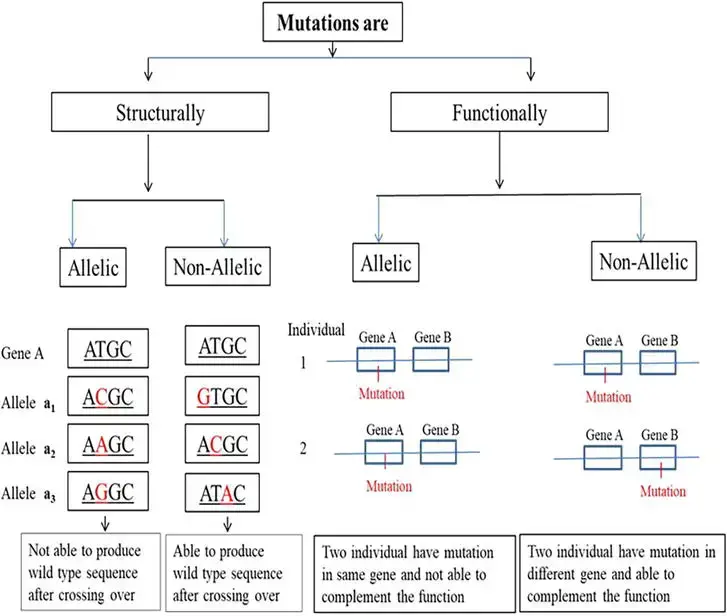
Differences Between Multiple Alleles vs. Polygenic Traits
Understanding the difference between multiple alleles and polygenic traits is essential in genetics. Both concepts involve the genetic basis of traits but operate through distinct mechanisms and exhibit different patterns of inheritance and expression.
Multiple Alleles
- Definition: Multiple alleles refer to the presence of more than two alternative forms of a gene at a specific locus on the same DNA strand. Each individual inherits two alleles for a gene, but the gene itself may have several variants within a population.
- Location: Multiple alleles are located at the same locus on a single chromosome.
- Genetic Variation: The phenotypic expression of traits controlled by multiple alleles can be determined by co-dominance, where multiple alleles contribute to the phenotype, or complete dominance, where one allele completely masks the effect of others.
- Environmental Influence: The expression of traits governed by multiple alleles is typically not influenced by environmental factors. The genetic variation primarily determines the phenotypic outcome.
- Example: The ABO blood group system in humans is a classic example of multiple alleles. The system includes three alleles (A, B, and O) that combine to produce four possible blood types: A, B, AB, and O.
Polygenic Traits
- Definition: Polygenic traits are controlled by a group of non-allelic genes, which means that multiple genes contribute to the expression of a single trait. Each of these genes is located on different DNA strands.
- Location: Polygenic traits involve genes spread across different loci on various chromosomes.
- Genetic Variation: Traits determined by polygenic inheritance are often influenced by incomplete dominance or co-dominance among the contributing genes. These traits are usually quantitative and show a continuous range of phenotypes.
- Environmental Influence: The expression of polygenic traits is significantly affected by environmental factors. These factors interact with the genotype to influence the phenotype, leading to a wide range of possible outcomes.
- Example: Kernel color in wheat is a well-known example of a polygenic trait. It is controlled by multiple genes, each contributing to the color intensity and shade, resulting in a continuous spectrum of colors rather than discrete categories.
| Aspect | Multiple Alleles | Polygenic Traits |
|---|---|---|
| Definition | More than two alternative forms of a gene at the same locus | Controlled by a group of non-allelic genes contributing to a single trait |
| Location | Same locus on a single chromosome | Different loci on various chromosomes |
| Genetic Variation | Phenotypic expression may involve co-dominance or complete dominance | Influenced by incomplete dominance or co-dominance, showing a continuous range of phenotypes |
| Environmental Influence | Typically not influenced by environmental factors | Significantly affected by environmental factors |
| Example | ABO blood group system in humans (A, B, O alleles) | Kernel color in wheat (varies in color intensity and shade) |
Pseudoalleles vs. multiple alleles
In the field of genetics, understanding the distinction between pseudoalleles and multiple alleles is crucial for comprehending various inheritance patterns and gene interactions. Both concepts relate to genetic variation, but they operate through different mechanisms and have distinct implications.
Pseudoalleles
- Definition: Pseudoalleles refer to two or more closely linked genes that have similar effects on a trait. Although these genes are located near each other on the same chromosome, they can influence the phenotype in a way that makes them appear as a single functional unit.
- Location: Pseudoalleles are situated on the same chromosome and are often inherited together due to their proximity.
- Genetic Interaction: These genes exhibit similar effects and often act in a coordinated manner. They are not strictly allelic variations of a single gene but rather genes that are functionally related and located close together.
- Crossing Over: Since pseudoalleles are tightly linked, crossing over between them is less likely to occur compared to more distantly located genes.
- Origin: Pseudoalleles typically arise from gene duplication events. After duplication, the resulting genes may evolve to perform similar functions but remain physically close on the chromosome.
- Example: In fruit flies (Drosophila), the red eye color mutants such as the white eye (w) and apricot (apr) are considered pseudoalleles. They are closely located on the chromosome and exhibit similar effects on eye color.
Multiple Alleles
- Definition: Multiple alleles refer to the existence of more than two alternative forms of a single gene at a specific locus. Each allele contributes to the variation of a particular trait, and these alleles can display various types of dominance relationships.
- Location: Multiple alleles are all located at the same genetic locus on a chromosome but represent different versions of the same gene.
- Genetic Variation: These alleles can show different patterns of dominance, such as complete dominance, co-dominance, or incomplete dominance. The presence of multiple alleles allows for a broader range of phenotypic variations.
- Crossing Over: Crossing over is not applicable in the context of multiple alleles, as they are variations of a single gene at a single locus. Instead, recombination occurs between different loci.
- Origin: Multiple alleles arise from mutations within the same gene over time. Each mutation creates a new allele, leading to a diverse set of versions for that gene.
- Example: The ABO blood group system in humans is a classic example of multiple alleles. The gene responsible for blood type has three alleles (A, B, and O), which interact to determine an individual’s blood group.
| Aspect | Pseudoalleles | Multiple Alleles |
|---|---|---|
| Definition | Closely linked genes with similar effects on a trait, acting as a single functional unit | More than two alternative forms of a single gene at a specific locus |
| Location | Same chromosome, often inherited together due to proximity | Same locus on a chromosome but different versions of the gene |
| Genetic Interaction | Genes have similar effects and act in a coordinated manner; functionally related | Different patterns of dominance (complete, co-dominance, incomplete) with broader phenotypic variation |
| Crossing Over | Less likely between tightly linked pseudoalleles | Not applicable; recombination occurs between different loci |
| Origin | Arise from gene duplication events, evolve similar functions | Arise from mutations within the same gene over time |
| Example | Fruit fly red eye color mutants (e.g., white eye and apricot) | ABO blood group system in humans (alleles A, B, O) |
Importance of Multiple Alleles
Here are some key reasons why multiple alleles are important:
- Genetic Diversity: Multiple alleles contribute to the genetic diversity within populations. The presence of various alleles for a single gene increases the potential range of phenotypes, allowing organisms to adapt to different environmental conditions.
- Evolutionary Adaptation: Multiple alleles provide the raw material for natural selection to act upon. This genetic variation allows populations to evolve and adapt to changing environments over time.
- Inheritance Patterns: Multiple alleles can lead to a variety of inheritance patterns, including complete dominance, co-dominance, and incomplete dominance. Understanding these patterns is crucial for predicting the outcomes of genetic crosses and breeding programs.
- Phenotypic Variation: Different combinations of alleles can result in a wide range of phenotypic variations, even within a single species. This variation is essential for the survival and success of a population in different ecological niches.
- Medical Research: Multiple alleles play a role in various human diseases and conditions. Studying the effects of different alleles can provide insights into the genetic basis of diseases, potential treatments, and personalized medicine.
- Blood Transfusions: In the ABO blood group system, multiple alleles determine blood types and compatibility for blood transfusions. Understanding these alleles helps ensure safe and successful blood transfusions.
- Biodiversity Conservation: In species conservation efforts, considering the genetic diversity within populations is essential to maintaining healthy and resilient populations that can withstand environmental challenges.
- Breeding Programs: In agriculture, multiple alleles are important for developing new plant and animal varieties with desirable traits. Breeders can select for specific alleles to enhance productivity, disease resistance, and other beneficial characteristics.
- Population Genetics: The study of multiple alleles within populations provides insights into gene flow, genetic drift, and how populations evolve over time.
- Education and Understanding: Understanding multiple alleles is a fundamental concept in genetics education. It helps students grasp the complexity of inheritance, gene expression, and the interactions between alleles.
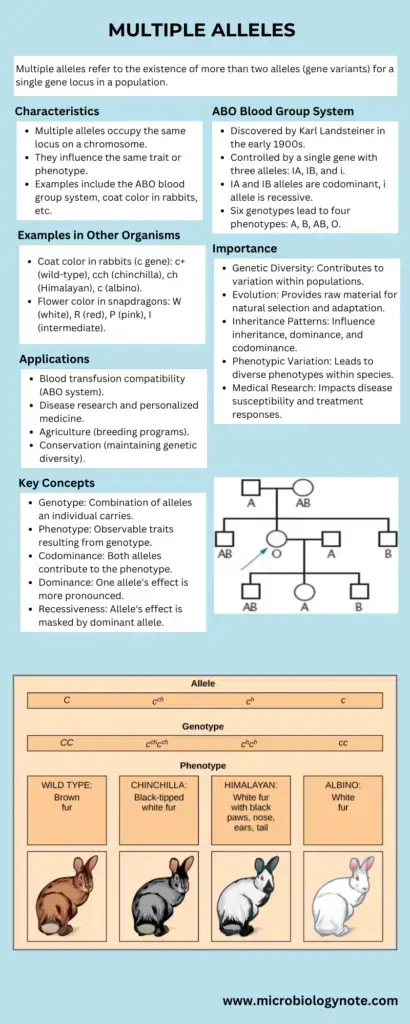
Mindmap on Multiple Alleles
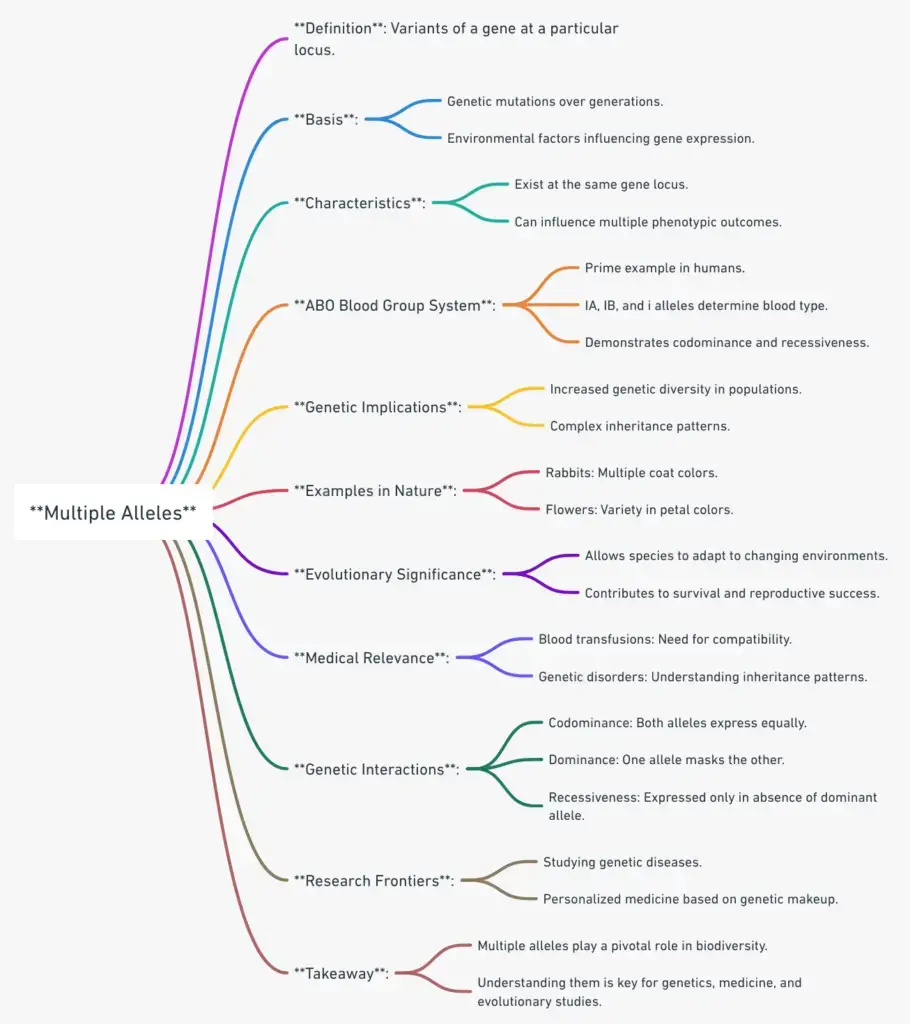
FAQ
What are multiple alleles?
Multiple alleles are different forms or variants of a single gene that occupy the same genetic locus on a chromosome.
How do multiple alleles differ from polygenic traits?
Multiple alleles refer to different versions of a single gene, while polygenic traits are influenced by multiple genes, each with various alleles.
Can you give an example of multiple alleles in humans?
The ABO blood group system is a classic example of multiple alleles in humans, involving three alleles: IA, IB, and i.
How do multiple alleles influence blood types?
In the ABO blood group system, IA and IB alleles produce A and B antigens, while i allele results in O antigen. Different combinations determine the blood type.
Do all individuals carry multiple alleles for every gene?
No, multiple alleles are specific to certain genes and traits. Not all genes have multiple alleles.
Can multiple alleles lead to intermediate phenotypes?
Yes, multiple alleles can result in intermediate phenotypes when neither allele is completely dominant, leading to a blending or combination of traits.
Can multiple alleles exhibit co-dominance?
Yes, multiple alleles can exhibit co-dominance, where both alleles are expressed equally in a heterozygous individual, such as the AB blood type.
What is meant by variable expressivity in multiple alleles?
Variable expressivity refers to the range of phenotypic effects produced by a single genotype due to factors like gene expression variations, environmental influences, or genetic modifiers.
How do multiple alleles contribute to genetic diversity?
Multiple alleles increase genetic diversity by offering various combinations of alleles that lead to diverse phenotypes within a population.
Are multiple alleles responsible for only qualitative traits?
No, multiple alleles can be responsible for both qualitative and quantitative traits. Qualitative traits have distinct categories, while quantitative traits exhibit a range of continuous variation.
- Vasisth, P., M. Limbalkar, O., & Sharma, M. (2023). Genetics of Multiple Alleles: Concept and Function. IntechOpen. doi: 10.5772/intechopen.1001464
- https://www.biologyonline.com/dictionary/multiple-alleles
- https://biologydictionary.net/multiple-alleles/
- http://hobart.k12.in.us/jkousen/Biology/multalle.htm
- https://www.biologydiscussion.com/genetics/multiple-alleles/multiple-alleles-meaning-characteristics-and-examples-genes/35452
- https://courses.lumenlearning.com/wm-nmbiology1/chapter/reading-multiple-alleles/
- https://courses.lumenlearning.com/wm-biology1/chapter/reading-multiple-alleles/
- https://www.embibe.com/exams/multiple-allelism/
- https://www.geeksforgeeks.org/multiple-alleles/
- https://gamesmartz.com/definitions?definition=5937&multiple-allele&s=83
- Text Highlighting: Select any text in the post content to highlight it
- Text Annotation: Select text and add comments with annotations
- Comment Management: Edit or delete your own comments
- Highlight Management: Remove your own highlights
How to use: Simply select any text in the post content above, and you'll see annotation options. Login here or create an account to get started.